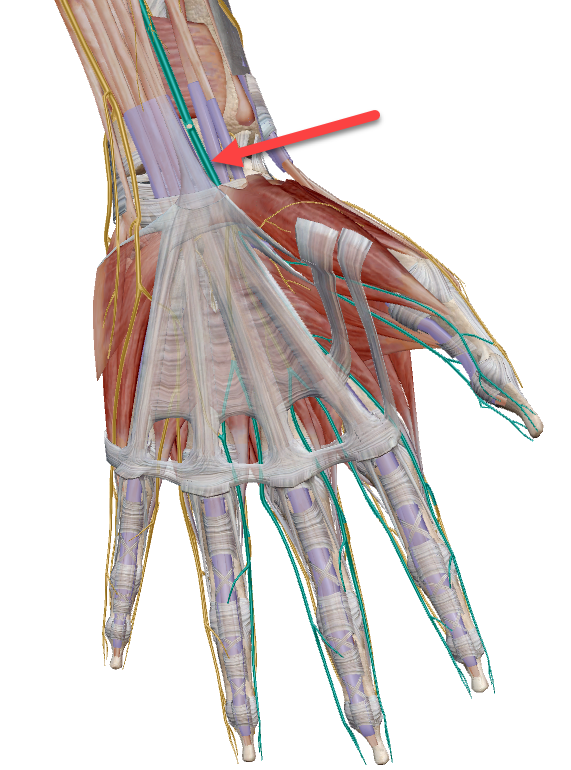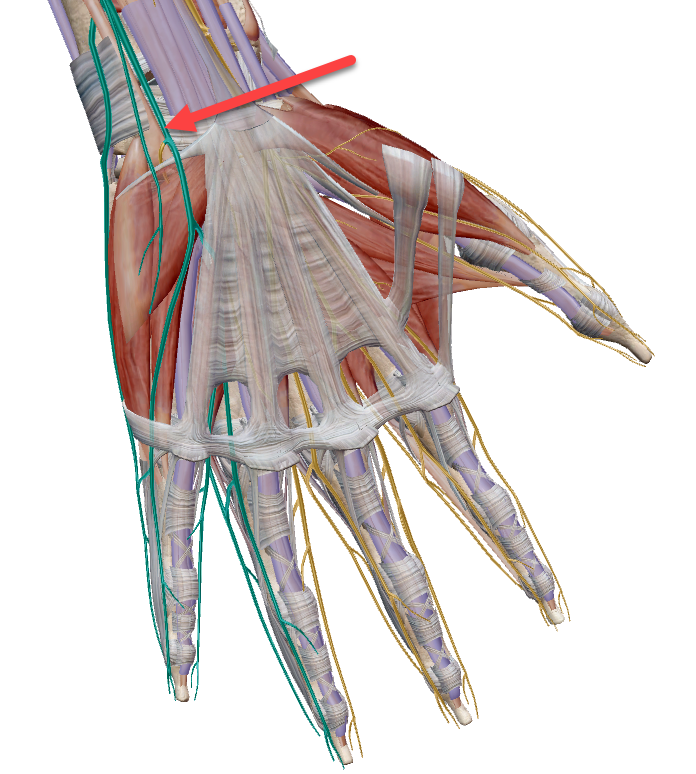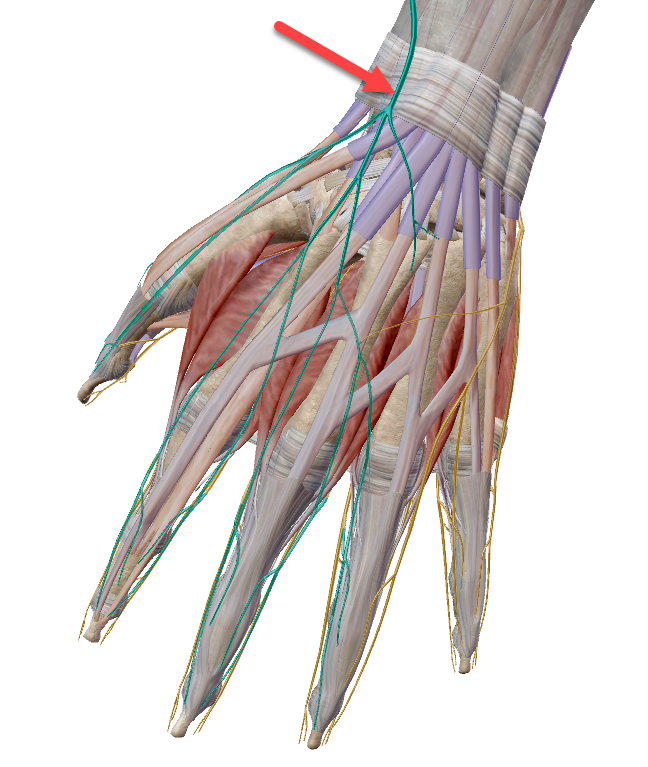7201 Hand and Wrist Nerves
Nerves: The Control and Sensation Network
The hand is innervated by three main nerves: the median, ulnar, and radial nerves. These nerves are like the electrical wiring of the hand, transmitting signals from the brain to control muscles and provide sensation:

Median Nerve: Precision and Sensation
- Function: The median nerve controls some of the muscles that enable precise finger movements and provides sensation to the thumb, index, middle, and part of the ring finger.
- Carpal Tunnel Syndrome: This nerve passes through the carpal tunnel, and compression here can lead to carpal tunnel syndrome, characterized by numbness, tingling, and weakness in the affected fingers.
- Importance in Daily Tasks: The median nerve’s control over fine motor skills is essential for tasks like writing, typing, or handling small objects.

Ulnar Nerve: Grip and Complex Movements
- Function: The ulnar nerve controls muscles responsible for complex hand movements and provides sensation to the little finger and part of the ring finger.
- Cubital Tunnel Syndrome: Compression of the ulnar nerve at the elbow (cubital tunnel) can lead to symptoms similar to carpal tunnel syndrome but affecting different fingers.
- Role in Expressive Gestures: The ulnar nerve’s control over intricate hand movements is vital for expressive gestures, musical performance, or specialized crafts.

Radial Nerve: Strength and Extension
- Function: The radial nerve controls muscles that extend the wrist and fingers, providing strength for tasks like lifting or pushing. It also provides sensation to the back of the hand.
- Injury Considerations: Injury to the radial nerve can lead to difficulty in extending the wrist and fingers, impacting daily activities.
- Importance in Manual Labor: The radial nerve’s control over strength and extension is crucial for manual laborers, athletes, and those engaged in physically demanding tasks.
The three main nerves of the hand – the median, ulnar, and radial nerves – play a vital role in controlling the muscles and providing sensation to the skin. They enable a wide array of tasks, from fine motor control to powerful gripping, and contribute to our ability to feel and interact with the world around us. Understanding these nerves can provide valuable insights into human neurobiology, occupational health, therapeutic interventions, and the unique human ability to manipulate and sense our environment.
